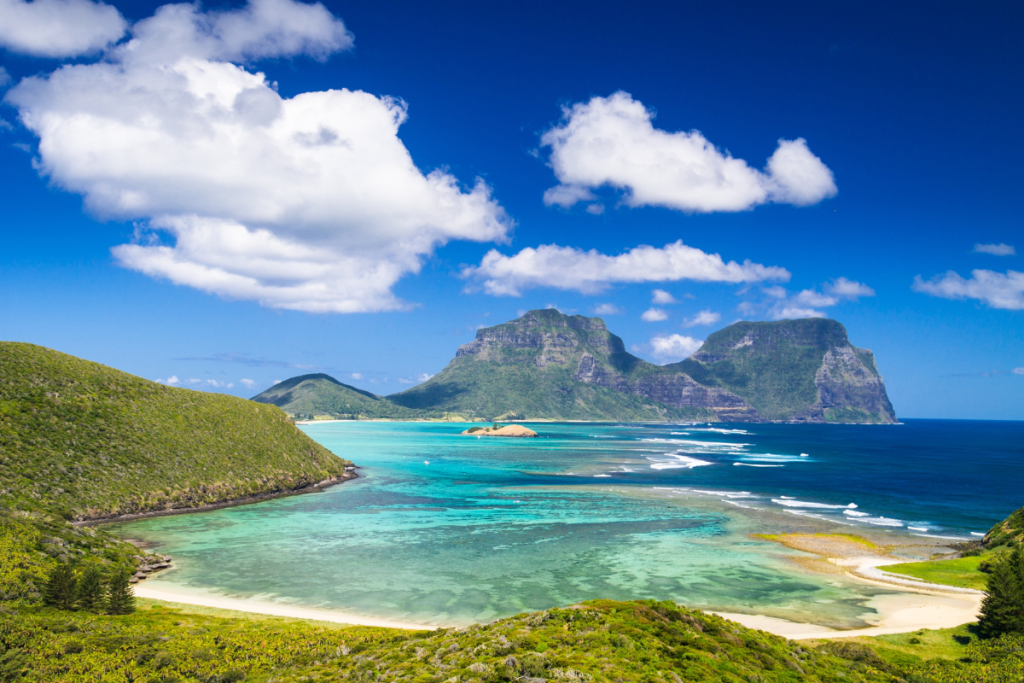New Zealand’s South Island past some of the most dramatic bays and inlets the home of the kiwi can muster.
They call it the Wild West Coast, and it’s easy to see why. Depending on your definition, it ranges from Nelson in the north to the salt-scented town of Haast on the edge of the native forest-clad Mount Aspiring National Park.
Along the way, you’ll encounter wave-bashed beaches and hulking cliffs that lurch straight from the Tasman Sea. Sightings of sea lions and cawing kea birds (NZ’s cheeky alpine parrot) are on the menu for wildlife lovers. Hikes through rain-spattered woods and sessions on some of the biggest surfing New Zealand has to offer wait for those who’ve packed the boots and boards.
Tempted? Of course, you are! This complete guide runs through the highlights of the legendary Wild West Coast. It offers insights into some of the top treks, the most enthralling natural wonders, and a few of the regional towns with their intriguing gold-mining heritage. Let’s get started…
How to get to New Zealand’s Wild West Coast
There’s good news for travellers looking to gain access to this stunning stretch of coastline: Its northern end starts in the town of Nelson. Not only is that one of the prime gateways to the South Island as a whole (the ferry port at Picton harbour is a short drive away), but it also has its very own airport. Flights link it directly to other major domestic hubs, such as Auckland, Wellington, and Christchurch.
To join the southern end of the Wild West Coast, you need to aim for either Haast or Greymouth. The first is on the main route towards the Tasman Sea once you leave Wanaka – expect some jaw-dropping scenery as you move from NZ’s inner alpine zones to its temperate forests on that one! The second sits at the end of the mountain crossing over Arthur’s Pass (also gorgeous). Alternatively, you can catch the Tranz Alpine scenic railway all the way there from Christchurch.
How to travel around the Wild West Coast of NZ
The drive down the Wild West Coast is an adventure in its own right. Somewhere past Glenhope, every bend in the road is one that could take your breath away. In fact, we’d go as far as to say that road tripping is pretty much the only way to properly explore this unique region. Most travellers opt to do the route from north to south.
Typically you’d be starting up in beach-fringed Nelson and the gorgeous Abel Tasman National Park (more on that later!). You follow State Highway 6 southwest through Murchison and then down to Charleston, which is where the sea comes into view. Generally speaking, the road quality is excellent. There are two wide lanes and traffic is rarely heavy.
That said, always be wary of the weather conditions. The South Island is renowned for its unpredictable climate. You might begin with blue skies and suddenly find yourself caught in big ocean storm systems. Check the forecast ahead of time, plan shorter days at the wheel than you might usually, and always be willing to change your plans if things go wrong.
When to visit
Most would say that summertime and autumn come up trumps for hikers on the Wild West Coast. From December to February, the weather is warmer and there’s just a tad less rain – although you will be travelling through the forest, so be ready to get wet! Springtime can still see hefty downpours, while winter is when the elements really take charge.
Strong winds and powerful storms roll off the Tasman Sea from May to September. However, there are fewer people around, and there’s hardly a better time to witness this sublime scenery at its most dramatic, with the blowholes of the coast pumping and the waves roaring against the shore.
The top 10 things to see along the Wild West Coast
The Wild West Coast might not have the same iconic breaks as the Raglan surf mecca on the North Island, and it certainly isn’t for beach bums on the lookout for sunbathing and relaxation. It is certain to wow with its sublime sights. Some of the region’s highlights include:
Punakaiki Pancake Rocks
Situated right in the heart of the Wild West Coast, where the Paparoa National Park rolls down in swathes of emerald forest to meet the lashing waves of the Tasman Sea, the so-called Pancake Rocks are arguably the region’s biggest draw.
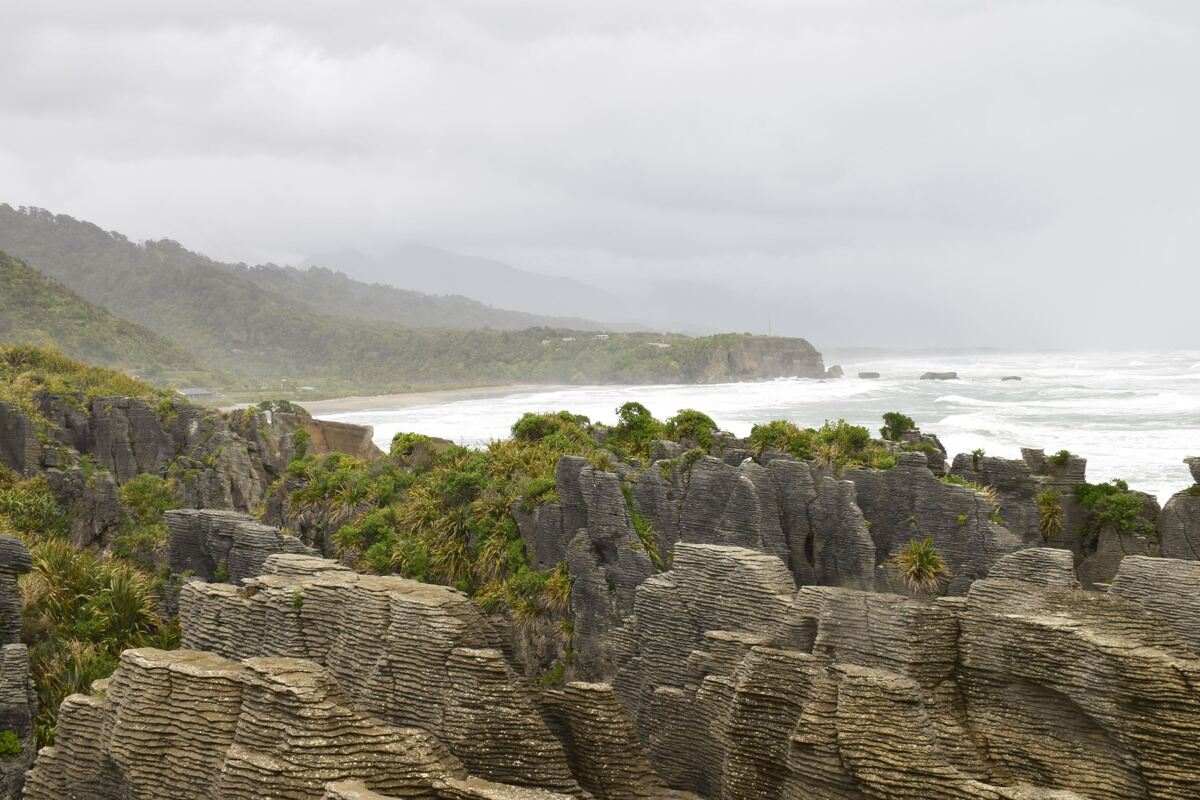
Made from curiously eroded limestone, they form stacks of strange geological protrusions that look a lot like pancakes layered on top of each other. In the middle are a series of amazing blowholes, which erupt with salt spray when big swells come in. Try to time your visit for high tide, when the place is undoubtedly at its most active and dramatic.
Paparoa National Park
Vast, wet, and largely empty, the Paparoa National Park spreads across a whopping 430 square kilometres of South Island. It starts right on the shore, where the reserve encompasses salt-sprayed beaches at the mouth of the Pororari River. Inland, the terrain slopes upwards until it reaches the Paparoa Range, where bellbirds, tuis, and rata trees all spill off the summits. There are some excellent hikes through wind-blasted forest plateaus and winding river canyons to be had. Ask about the routes at the i-SITE near the Pancake Rocks if you’re looking to lace up the boots.
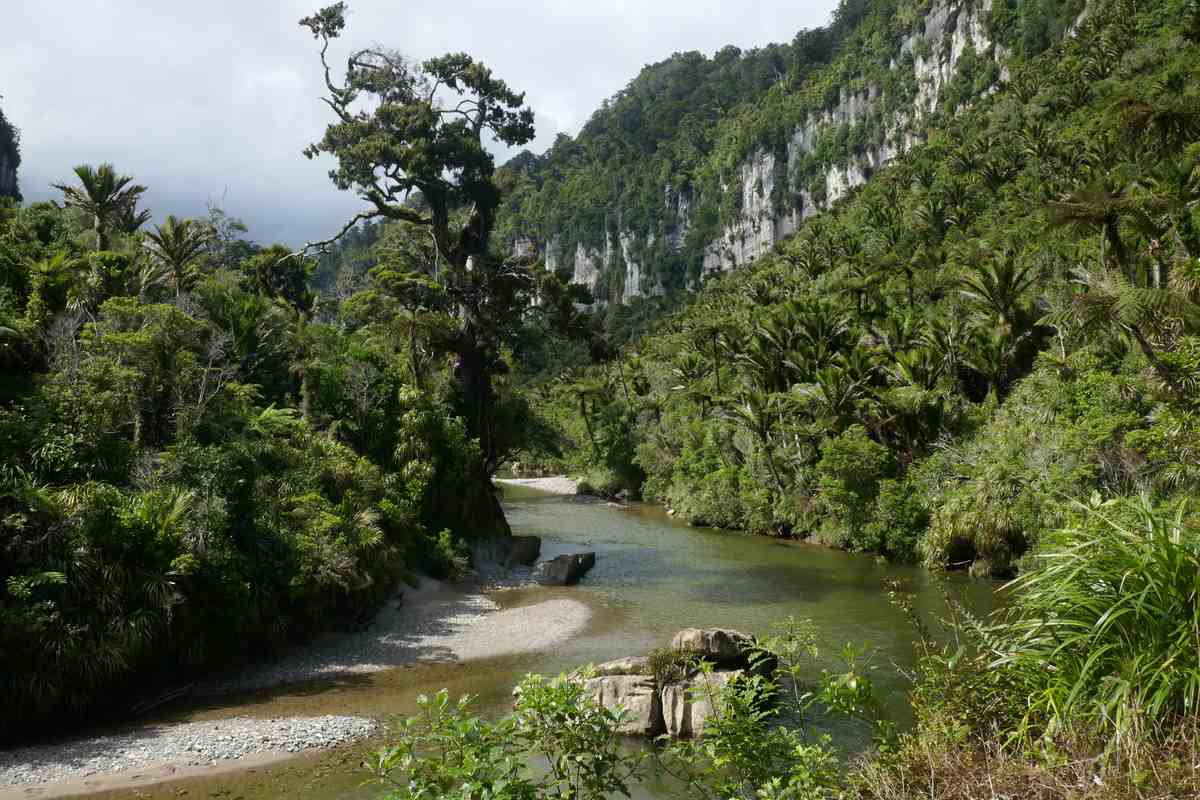
Nelson Lakes National Park
The Nelson Lakes National Park is the sort of New Zealand you will have seen in the travel brochures. This is where snow-mantled mountains frame gleaming lakes, where tussock hills roll to the horizon, and forests of beech and broadleaf mingle together. The zenith of the reserve has to be the duo of waters at its centre. There’s Lake Rotoroa and mountain-shrouded Lake Rotoiti (not to be confused with Lakes Rotorua or Rotoiti in the North Island). Bird spotting and hiking should both be on the menu.
Nelson
There’s a good chance that Nelson will be your first introduction to the north-western side of the South Island. And what an introduction it is! For starters, it’s a lived-in, buzzy city, with cafés and top-notch Kiwi eateries. It’s also one of the sunniest spots on the island, which is great news for those looking to kick it on the sands of Tahunanui Beach or walk the rocky coast up in Atawhai. Other curious sites to see before you rev down highway 6 include the Centre of New Zealand Monument (self-explanatory) and the vintage Nelson Market (meet the locals).
Fox & Franz Josef glaciers
Strictly speaking, these two iconic ice fields aren’t on the coastline of New Zealand at all. But, as State Highway 6 navigates inland after Ruatapu and Ross, there’s simply no missing them. The first you’ll reach is Franz Josef. Spend at least a day there to hike the Franz Josef Glacier Trail to the base of the wonder (or take longer to do a helicopter flyover and complete the challenging Robert’s Point Track). Nearer to Fox Glacier is the wonderful Lake Matheson Walk. Take that track to get unbeatable views of the Westland Tai Poutini National Park (home to some of the highest mountains in the country).
Truman Track
Short but pretty darn awesome, the Truman Track is a 0.7km stretch of maintained DOC path that wiggles through forests of moss-caked cabbage palms and blooming rata trees. It links the meandering courses of the Coast Road (the main route up the Wild West Coast) to a protected part of the shoreline where it’s even possible to see nesting penguins – although that’s rare. The finale of the walk is a viewing deck that pokes straight over the Tasman Sea. On big swells, it’s an awesome place to watch the waves rolling in. The next-door beach is also pretty stunning, with its occasional waterfall and overhanging rock features.
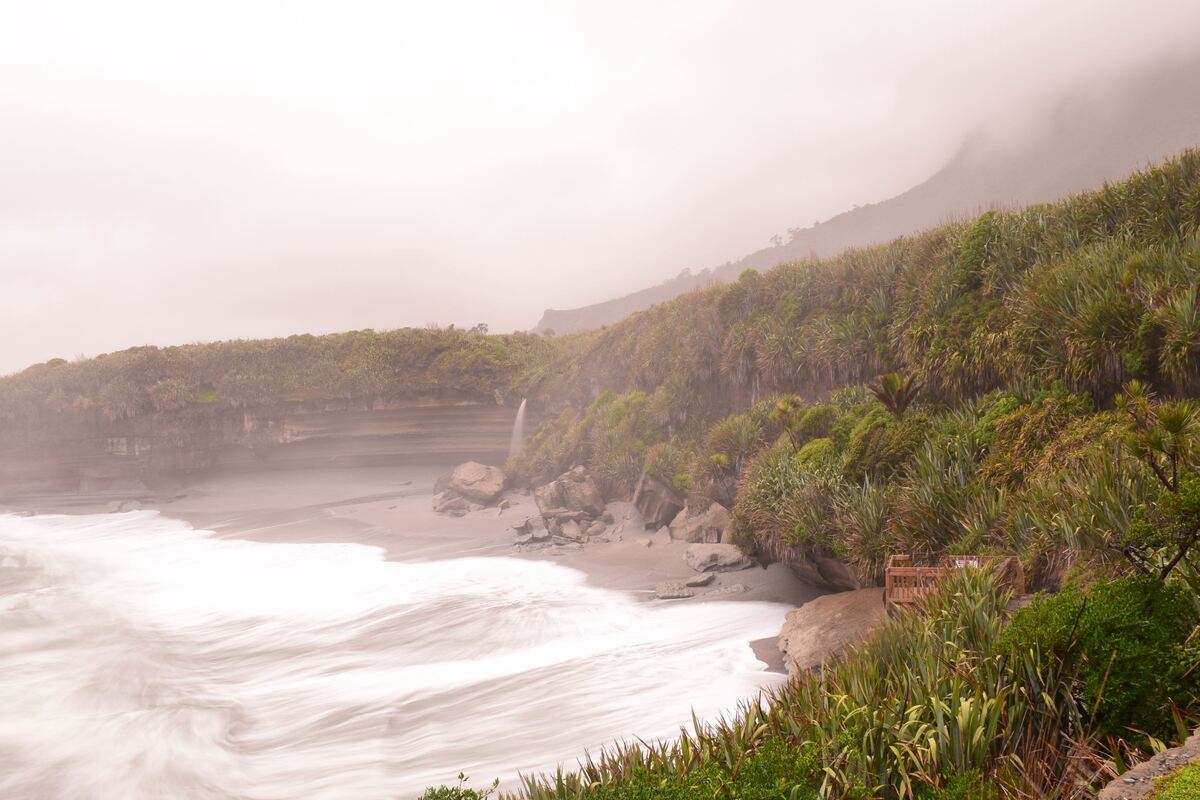
Abel Tasman National Park
Prepare to be stunned by one of the undisputed jewels of the South Island – nay, New Zealand as a whole. The Abel Tasman National Park occupies the northernmost end of the Wild West Coast. It’s actually a short detour off Route 6, around 30 minutes drive from Richmond (a suburb of Nelson). What awaits is sure to keep the camera a-clicking. Gorgeous, white-sand beaches abound, lapped by turquoise seas in lagoons that stretch between forested headlands. There are also pretty islands that silhouette beautifully on the horizon. And you’ll find the bucket-list-busting Abel Tasman Coast Track, one of the famous Great Walks that clocks up 60km across forests and sands.
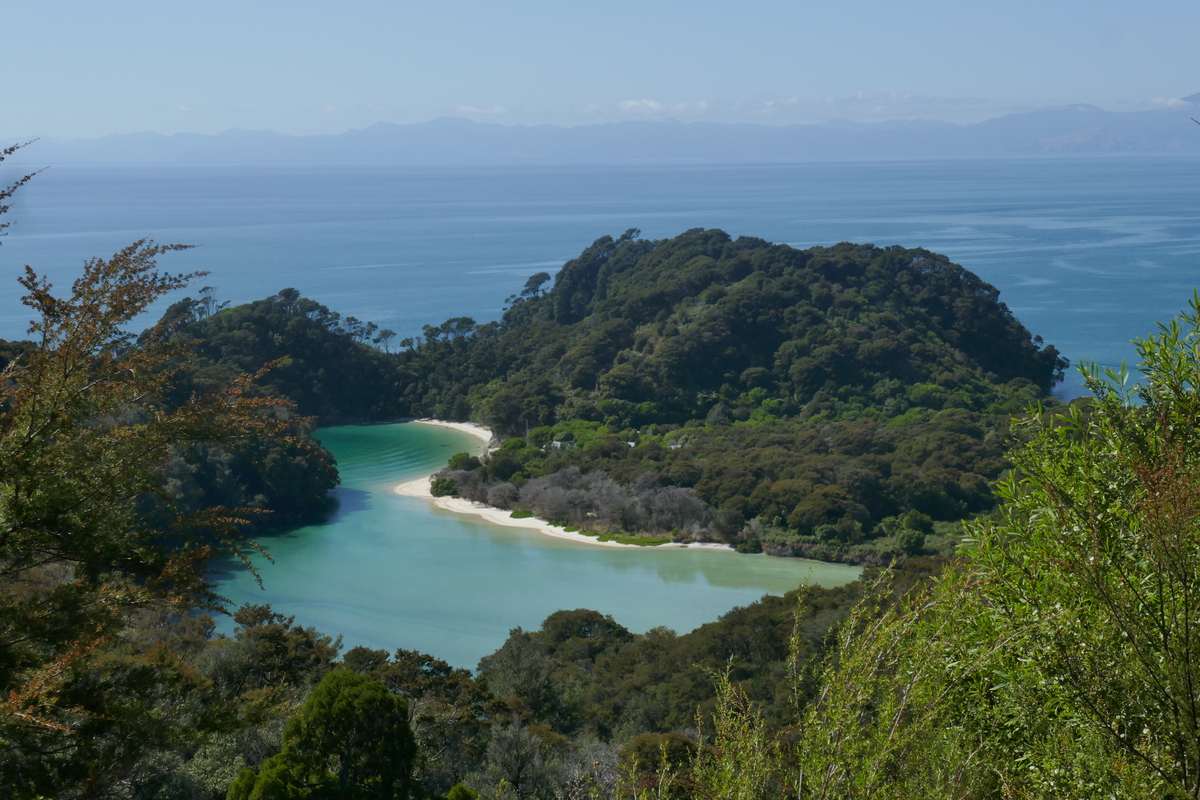
The Pelorus River
Weaving through the peaks of the Richmond Hill Forest Park in the northern reaches of the Marlborough region, the Pelorus River is another of the natural jewels you won’t want to miss on your way to the Wild West Coast. It’s now in the spotlight thanks to its role in The Hobbit films. However, there are also plenty of drawcards for non-film buffs. Take the collections of ferns and kereru trees that fringe the banks at the Pelorus Bridge. Or, choose to freshen up with some wild swimming at various suitable spots along the way (ask at the local i-SITE about those).
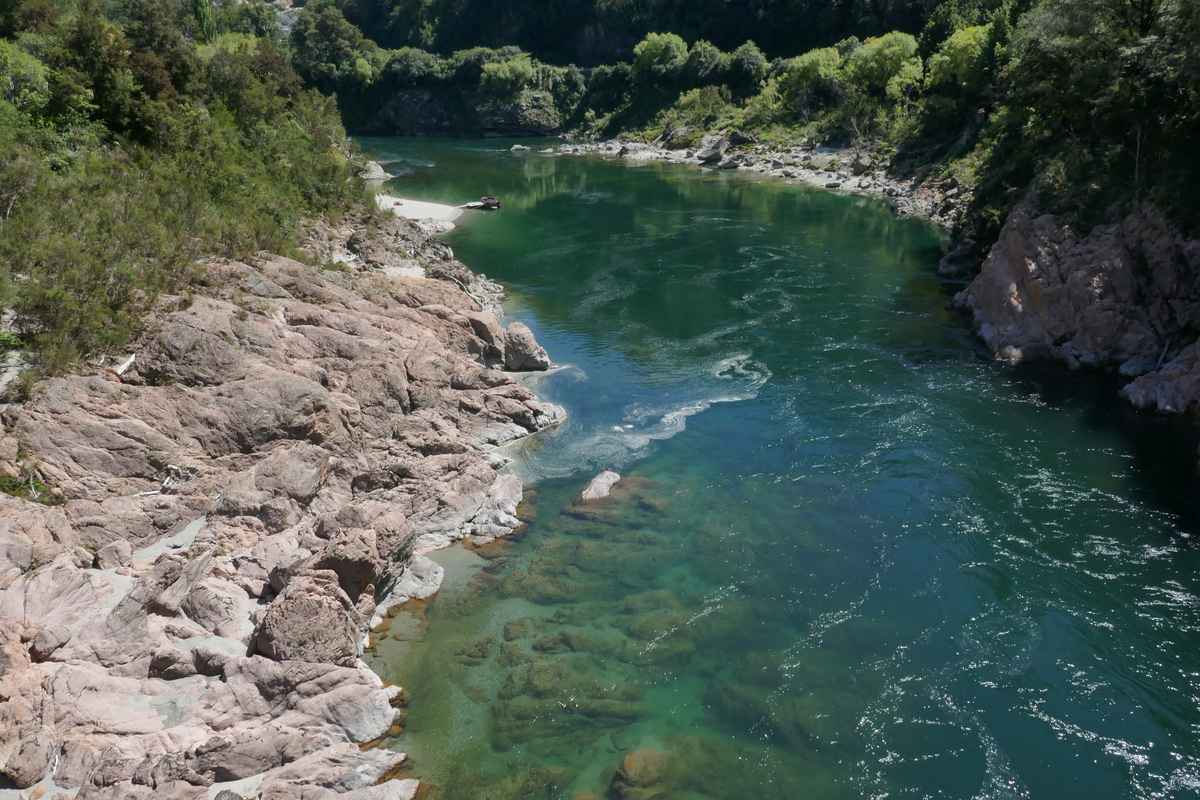
The Haast Pass
The Haast Pass is considered one of the most spectacular drives on the South Island. It links the ocean-washed western coast with the drier and more mountainous valleys of Wanaka and Queenstown within. In all, the route takes about an hour to complete when you’ve got your own wheels. It begins low and slowly climbs, trading cabbage palms for huge pine trees. Waterfalls make mighty viewing along the route – there are loads, from the Roaring Billy Falls to the beautiful Fantail Falls. Closer to Wanaka, be sure to stop for the Blue Pools Walk. It reveals hidden river confluences where the H20 glows a magnificent turquoise blue.
Greymouth
Greymouth is the sleepy but charming main town of the Wild West Coast. It boomed in the 1800s at the onset of the gold rush and later became a major coal-mining hub. You can learn all about that era at the nearby Shantytown Heritage Park, a place to pan for gold nuggets and ride the steam train. Back in Greymouth itself, you’ll catch some good local brewhouses and a decent array of cafes.
Other things to know before travelling
- Fill up the car whenever you see a petrol station! Seriously, you can travel for hours without seeing a pump in these parts.
- If you’re planning a hike anywhere in New Zealand, always be sure to check the trail conditions at the local i-SITE information centre or DOC office. Also, let someone know where you’re going.
- Bring waterproofs. This is one of the wettest corners of the country.
- Take your time when driving the Wild West Coast. There are big bends – especially on the route north from Greymouth – and mountain passes that are particularly susceptible to bad weather conditions.
This guide was written in collaboration with The Surf Atlas.
While you’re here: Subscribe to our newsletter for the latest tips, deals and news. It only takes a few seconds and we respect your privacy:

